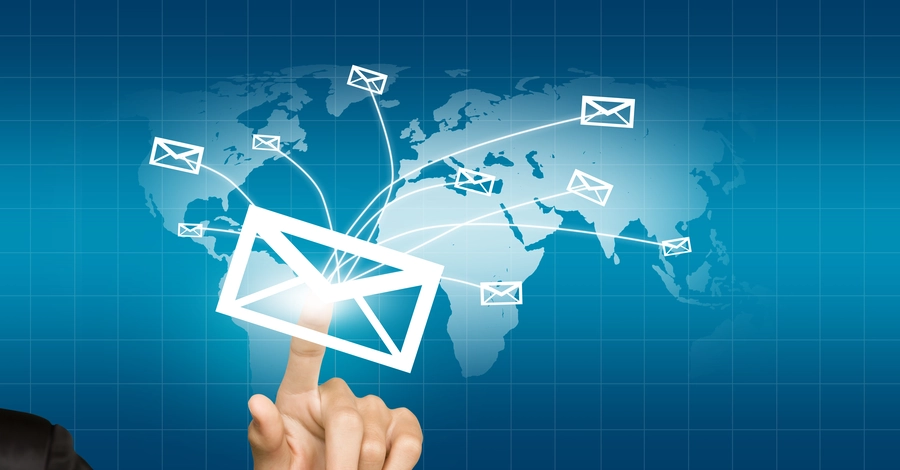27 Must-Track Customer Service KPIs to Boost Satisfaction
- December 9, 2020
- 17 mins read
- Listen

Table of Content
Customer service KPIs are at the core of great service. They reveal how your team is resolving, engaging, and driving loyalty in your customers. These KPIs provide the insights you need to streamline operations, boost satisfaction, and build long-lasting relationships.
This guide explores impactful customer service KPIs, how to measure them, and actionable optimization tips.
What Are Customer Service KPIs?
Customer service KPIs are the metrics that tell about the efficiency and effectiveness of a customer support team.
These metrics enable businesses to track performance, identify improvement areas, and ensure that customers’ needs are met promptly and satisfactorily.
Why Are Customer Service KPIs Important?
- Improve Customer Experience: KPIs provide insight into customer satisfaction and help resolve pain points.
- Drive Business Growth: Satisfied customers are repeat customers and refer more customers to the business.
- Smoothen Operations: Monitoring KPIs helps identify areas where better resource utilization can be done.
27 Top Customer Support KPIs to Measure What Matters
Customer service KPIs are the core of any support team performance and effectiveness measurement.
They provide a quantitative view that every business needs to understand whether it is successfully meeting customer expectations or failing.
Focusing on these metrics can enable companies to find actionable strategies that better drive satisfaction, streamline operations, and enhance customer relationships.
1. First Response Time (FRT)
First Response Time (FRT) is the time an organization takes to respond to a customer inquiry once it has been received. This metric is important because customers expect timely responses in today’s fast-paced world.
According to industry studies, 90% of customers consider an immediate response, especially for urgent issues. Reducing FRT enhances customer satisfaction and demonstrates your company’s commitment to resolving issues quickly.
Companies can improve FRT through live chat software, automated responses, or chatbot technology so that customers feel heard even during peak hours or off-business times.
When it comes to using chatbots, you can rely on top platforms like REVE Chat and leverage its AI chatbot to significantly improve First Response Time (FRT). REVE’s powerful AI chatbot can help you engage customers immediately, provide instant replies to common queries, automate repetitive queries and routes complex issues to the right agent.
Why It Matters:
- Rapid responses instill a sense of confidence and limit frustration.
- 59% of customers are most likely to make a purchase when their queries are responded to within a minute.
How to Calculate: To find the FRT, add all customer query response times and divide the sum by the number of queries. For example, if your team took 2, 4, and 6 minutes to answer three queries, the FRT would be: (2 + 4 + 6) / 3 = 4 minutes. On the other hand, you can have this metric directly available by using automation tools or CRM software; it will not only let you track this in real-time but also draw trends over periods.
Optimization Tips:
- Scale your support team to meet demand.
- Use chatbots for immediate responses to basic queries.
2. Customer Satisfaction Score (CSAT)
Customer Satisfaction Score, or CSAT, is one of the more direct measurements of how glad your customers are with your service, product, or interaction.
It usually comes from post-interaction surveys and provides quite actionable insights into detailed areas of improvement. For instance, if one sees a low score in CSAT regarding product support, the company can train its support agents or revamp its knowledge base.
In addition, CSAT surveys provide customers with an avenue to be heard, hence turning them into loyal customers. To maximize the usefulness of CSAT, analyze trends over time and also relate these to customer retention or churn rates.
Why It Matters:
- Retaining customers is more cost-effective than acquiring new ones.
- Higher CRR indicates trust and satisfaction.
How to Calculate: Each formula is just the beginning to set a correct track to reach the goal accurately and make strategic plans. Every calculation method should be adjusted to organizational goals and the data-tracking system to make it clear and consistent. Utilizing tools such as CRM software will make it easier because metrics intake and analysis can be automated for real-time insight into performance.
Where:
- CE = Customers at the end of the period
- CN = New customers acquired
- CS = Customers at the start of the period
Optimization Tips:
- Provide consistent and high-quality service.
- Implement loyalty programs.
3. Net Promoter Score (NPS)
The NPS is a measure of customer loyalty, based on one simple question: “How likely are you to recommend our product/service to others? ” Responses are divided into three categories: Promoters, Passives, and Detractors.
A high score means a very good brand reputation and loyalty, while a low score indicates dissatisfaction with the brand. More than measuring the scores, what a business should do is understand the “why” of the responses.
Feedback from detractors gives a roadmap to improvement, and promoters can be tapped for testimonials or referrals that turn loyal customers into brand advocates.
How to Measure: Ask questions such as:
- “How satisfied are you with our service?” (on a scale of 1-10 or with emojis/stars)
Optimization Tips:
- Collect feedback through surveys across multiple channels.
- Address gaps identified in customer feedback.
4. Customer Effort Score (CES)
It is a metric that measures how much effort a customer has to put in to resolve an issue or complete a transaction.
High-effort experiences-navigating a complicated website, for example, or long calls to support usually lead to frustration and churn. On the other hand, low-effort experiences drive loyalty and repurchase.
Companies can enhance CES by simplifying processes for their customers, such as providing omnichannel support or creating self-service portals.
Studies have found that a reduction in customer effort may be more effective in driving loyalty than merely meeting expectations.
Why It Matters:
- A higher FCR reduces customer frustration and boosts loyalty.
How to Optimize:
- Train agents in effective communication and problem-solving.
- Use live chat scripts to streamline resolutions.
5. Average Resolution Time (ART)
It is the time taken to resolve a customer’s query or issue altogether. The shorter the ART, the better the customer satisfaction, since this minimizes customer inconvenience. Customers get irritated even when their issue gets resolved if it takes too much time.
To ensure ART is optimized, the business should equip agents with advanced CRM tools, AI-driven suggestions, and a vast knowledge base.
Monitoring ART across channels like email, chat, and social media may uncover bottlenecks in the customer service process that could be better utilized.
Optimization Tips:
- Use a ticketing system to prioritize and track issues.
- Monitor high-resolution times and identify bottlenecks.
6. Customer Retention Rate (CRR)
It refers to the percentage of customers retained by a business over a certain period of time. Obviously, retaining customers is much cheaper than gaining new ones, and generally speaking, a high CRR indicates a healthy business.
In order to enhance retention, businesses should work on delivering value to their customers through loyalty programs, personalized offers, or proactive customer engagement.
Regular analysis of churn can also be of great value for every business since it allows fixing underlying issues and enhancing the offering.
Why It Matters:
- Helps businesses balance quality service with cost efficiency.
Optimization Tips:
- Automate common queries with AI-powered tools.
- Schedule staffing based on demand patterns.
7. Customer Churn Rate – CCR
It reflects the percentage of customers who stop doing business with a company within a certain period of time. If it is high, that may indicate dissatisfaction or there is some competition that offers value.
Identification of patterns of churn, such as product dissatisfaction, poor support, or pricing issues, lets companies put in place some very tactical actions.
For example, subscription-based businesses can use predictive analytics to identify at-risk customers and offer them incentives or personalized solutions to keep them.
Optimization Tips:
- Provide live chat support during the buying process.
- Use proactive engagement strategies to assist hesitant buyers.
8. Active Engagement Rate (AER)
This reflects the portion of your customers that is really taking part in one or another channel with your brand: be it social media, email, or a website. Good levels of engagement speak about the intense interest and devotion of the audience.
In developing the AER, companies increase the creation of values, events, or interactive campaigns.
It would be helpful if this could allow the following: analysis of changes in the index with time; and what strategies have generated greater influence.
Optimization Tips:
- Regularly follow up with detractors to address concerns.
- Reward promoters with loyalty benefits.
9. Customer Lifetime Value (CLV)
CLV is the projection of the total revenue a customer will generate over their lifetime with your company. A high CLV means that one has loyal customers, which is considered vital for profitability in the long run.
Upselling, cross-selling, and offering extraordinary customer experiences are some of the ways to increase CLV. Segmentation also allows businesses to target high-value customers and develop strategies according to their needs.
Examples include making high-value customers feel important and eager to purchase more with things like VIP programs or early access to new features/products.
Optimization Tips:
- Simplify customer support workflows.
- Enhance self-service resources like FAQs and knowledge bases.
10. Social Media Sentiment Analysis
This metric helps businesses assess brand perception and detect emerging issues. Positive sentiment is indicative of strong brand affection, while negative sentiment points to areas that need attention.
Sentiment analysis can be automated with tools such as Brandwatch or Sprout Social for real-time insight. By promptly addressing negative feedback and amplifying positive mentions, a business can foster a positive brand image and deepen customer trust.
Why It Matters:
- Identifies which channels customers prefer and perform best.
Optimization Tips:
- Invest in omnichannel solutions to create seamless experiences.
- Regularly review channel metrics to identify areas for improvement.
11. Resolution Rate
It refers to the percentage of customer issues resolved at first contact without escalation or follow-up.
A high-resolution rate indicates the efficiency and a well-trained support team. Businesses can improve this metric by empowering agents with decision-making authority, thorough customer profiles, and real-time access to support tools.
Regular training in problem-solving techniques also enhances this KPI.
Optimization Tips:
- Provide agents with authority to make decisions and access advanced tools to resolve issues efficiently.
- Use historical data to identify common issues and create resolution templates.
12. Ticket Volume
This is the number of incoming support requests within a specific period. Peaks in the volume of the tickets might signal an issue with a product, service, or recent release.
This metric helps the business predict resource needs and prepares staffing accordingly to meet peak volumes.
Automated responses, FAQs, and chatbot solutions can handle large volumes of tickets without degrading the customer experience.
Optimization Tips:
- Introduce an extensive FAQ section or knowledge base to handle frequent queries.
- Use AI-driven bots to manage routine tickets.
13. Abandonment Rate
High abandonment rates may show longer wait times and less effectiveness in the support provided.
Organizations can minimize it by giving ways to customers of having easy and quick access to live agents, estimated wait time, and even call-backs.
Efficient routing mechanisms with omnichannel support make it less frustrating moments for customers.
Optimization Tips:
- Use real-time queue management and prioritize urgent queries.
- Provide call-back options or asynchronous communication like email.
14. Average Wait Time (AWT)
AWT measures how long customers wait before connecting with an agent. This KPI directly impacts customer satisfaction, as long wait times often lead to negative experiences.
Businesses can optimize AWT by using intelligent call routing, adding support staff during high-demand periods, and leveraging self-service tools to address common inquiries.
Optimization Tips:
- Utilize intelligent routing to direct queries to the most suitable agents quickly.
- Scale staff during high-demand periods using historical data.
15. Service Level Agreement (SLA) Compliance
SLA Compliance refers to the adherence of an organization to the agreed response and resolution times with its customers.
Breach of SLAs will lead to loss of trust and may attract financial penalties in some industries. Regular checking of SLA compliance ensures accountability. Businesses can use automated alerts to flag off potential breaches, helping teams prioritize urgent cases.
Optimization Tips:
- Set up notifications for impending SLA breaches.
- Use priority tiers to ensure critical cases meet SLA requirements.
16. Customer Advocacy Score (CAS)
This refers to the degree of the likelihood of customers to advocate on behalf of your brand. Other than NPS, which is based on general recommendations, CAS measures specific advocacy activities such as public praise or referral program involvement.
High CAS scores denote high trust and loyalty. Businesses can enhance advocacy by offering quality every time, rewarding loyal customers, and nipping problems in the bud.
Optimization Tips:
- Be transparent and proactive in resolving issues before customers need to escalate.
- Incentivize loyal customers with discounts or referral bonuses.
17. Upsell and Cross-sell Success Rate
This KPI measures how often agents successfully upsell or cross-sell additional products or services during interactions. It is an indication of how well your team perceives the needs of customers and presents them with relevant solutions.
In order for businesses to boost this rate, agents should be equipped with data about customers and trained to identify opportunities within conversations.
Optimization Tips:
- Equip agents with detailed customer profiles for tailored suggestions.
- Teach agents to identify and align with customer needs.
18. Escalation Rate
Escalation Rate measures the % of all incoming support tickets or queries that get transferred to upper-level teams for support. Generally, a high rate of escalations may show a lack of training, muddled procedures, or insufficient tools at the front-line level.
Minimizing the ratio of escalation can be achieved by providing proper training and introducing clear workflows for resolving issues.
Optimization Tips:
- Define and streamline escalation processes to ensure smooth transitions.
- Regularly analyze escalated cases to identify patterns and improve training.
19. Contact Volume by Channel
This metric breaks down customer inquiries by communication channels, such as phone, email, chat, or social media. Understanding which channels customers prefer helps businesses allocate resources effectively.
For instance, if live chat is the most popular channel, investing in chatbot technology or adding more live agents can enhance service efficiency.
Optimization Tips:
- Offer multiple well-functioning channels to meet diverse customer needs.
- Use analytics to enhance performance on high-demand channels.
20. Repeat Contact Rate
This refers to the percentage of customers who have to contact support more than once for the same problem.
A high rate in most cases signifies unresolved problems or poor communication. The business can cure this by making sure detailed case notes are present, putting better follow-up processes in place for agents, and setting proper expectations during the first contact.
Optimization Tips:
- Maintain detailed logs of interactions to avoid repetitive questions.
- Ensure customers understand timelines and steps for resolution.
21. Customer Feedback Response Rate
This KPI measures the percentage of customers who give feedback when requested. A high response rate means the customers are much more engaged, while a low rate shows that there is room for improvement in the way feedback is solicited.
Simplify the process of feedback with speedy surveys, incentives, or personal requests to encourage participation.
Optimization Tips:
- Keep feedback forms short and mobile-friendly.
- Offer small rewards, such as discounts, for survey participation.
22. Cost Per Contact (CPC)
The cost involved in handling a customer contact via phone, email, or chat. It’s a metric that helps businesses understand how efficient their support operations are.
To lower CPC, one can use AI-driven chatbots, self-service options, or optimize staffing schedules to reduce operational costs without compromising on quality.
Optimization Tips:
- Use predictive analytics for workforce management.
- Reduce contact volume by empowering customers to solve issues independently.
23. Quality Assurance Score
This involves monitoring various customer interactions against set criteria related to professionalism, accuracy, and tone. By regular monitoring and scoring customer interactions, there is easy facilitation in spotting training needs, which maintains service levels.
In general, QA programs aim at making agents stick to the standards set by the company for smooth customer experiences.
Optimization Tips:
- Define metrics for tone, accuracy, and professionalism.
- Use QA feedback for continuous agent development.
24. Resolution Quality Index (RQI)
RQI measures resolution effectiveness from the customer’s point of view. It is not just about solving the problem but about the resolution that meets or surpasses expectations.
It may be judged through post-resolution surveys and follow-ups. High RQI scores show that the service is both efficient and oriented toward customers.
Optimization Tips:
- Gather customer feedback on whether the solution met their expectations.
- Identify recurring issues and fix them at their source.
25. Channel Switching Rate
This measures the percentage of customers who switch to another support channel to get their issues resolved.
A high rate indicates inefficiencies in your initial channel, such as incomplete information or poor response times. To lower this rate, the functionality of each channel should be enhanced, and consistent service quality ensured.
Optimization Tips:
- Ensure all channels offer comprehensive support.
- Use CRM tools to maintain consistent interaction records across channels.
26. Agent Utilization Rate
This KPI measures the percentage of time agents spend actively handling customer inquiries versus being idle.
High utilization rates indicate efficiency but should be balanced to avoid agent burnout. Businesses can use workforce management tools to schedule agents effectively, ensuring both productivity and job satisfaction.
Optimization Tips:
- Adjust shifts based on predicted contact volumes.
- Allow regular breaks to maintain agent productivity.
27. First Call Resolution (FCR)
FCR calculates the number of issues solved during the first call or contact. This will be one of the most important KPIs regarding customer satisfaction, as this would avoid follow-ups.
The FCR will be improved with better training more advanced tools for the agents and comprehensive customer data.
Optimization Tips:
- Add after-hours support using chatbots or global teams.
- Cater to different regions with language-specific agents.
5 Best Practices for Achieving Customer Service KPIs
Conclusion
Indeed, Resolution Rate, FCR, and CAS represent several key customer support KPIs that will need to be monitored and optimized for a more fulfilling customer experience. With live chat software, rationalized workflows, and well-equipped agents, the issues can be sorted out sooner at lesser cost, which improves loyalty for sure.
A data-driven focus on metrics ensures every interaction adds value, builds trust, and drives lasting success. Start refining your customer experience strategy today—because great support is the foundation of customer retention and growth.
Frequently Asked Questions
Key KPIs include Resolution Rate, First Call Resolution (FCR), Customer Advocacy Score (CAS), Average Wait Time (AWT), and Escalation Rate—these measure efficiency, satisfaction, and loyalty.
Live chat software enhances real-time support, reduces wait times, and increases first-contact resolution rates, offering a seamless experience across channels.
FCR eliminates repeat follow-ups, ensuring quick issue resolution and boosting customer trust and satisfaction in a single interaction.
Use automated FAQs, AI-powered chatbots, and self-service tools to address common inquiries, reducing workload on support teams.
A high escalation rate often signals inadequate frontline training or tools; improving agent resources can help resolve issues at first contact.
Lower CPC indicates efficient operations without compromising quality, achieved by optimizing workflows and leveraging automation tools.
CAS reflects trust and loyalty, helping businesses measure customer willingness to endorse and advocate for their brand.



